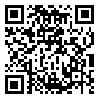BibTeX | RIS | EndNote | Medlars | ProCite | Reference Manager | RefWorks
Send citation to:
URL: http://ijme.tums.ac.ir/article-1-109-en.html
Medicine is known as a combination of science and art. Besides knowledge, a good physician should be equipped with the art of establishing communication with patients. The keystone of any efficient relationship like a therapeutic one is trust, and its deterioration makes the relationship deficient and based on mere need. Therefore, establishing an efficient relationship brings about positive results in treatment. In the last two decades, the trend in the physician-patient relationship has greatly changed, so that patient-centered care is now in focus. In this kind of relationship, physicians recognize patients as respectable human beings with their unique beliefs, attitudes, and concerns, etc. In this paper we intend to provide a brief introduction to the concept of physician-patient relationship and its chronological changes. Also, common models of physician-patient relationships (e.g. paternalistic, etc) are introduced, compared, and their most obvious strengths and weak points are analyzed. At the end, a succinct analysis on the dominant model(s) of physician-patient relationship in Iran&aposs medical settings has been provided, and the necessity of compiling a model based on Islamic values is proposed.
Accepted: 2013/10/9 | Published: 2014/11/15
| Rights and permissions | |
 |
This work is licensed under a Creative Commons Attribution-NonCommercial 4.0 International License. |





